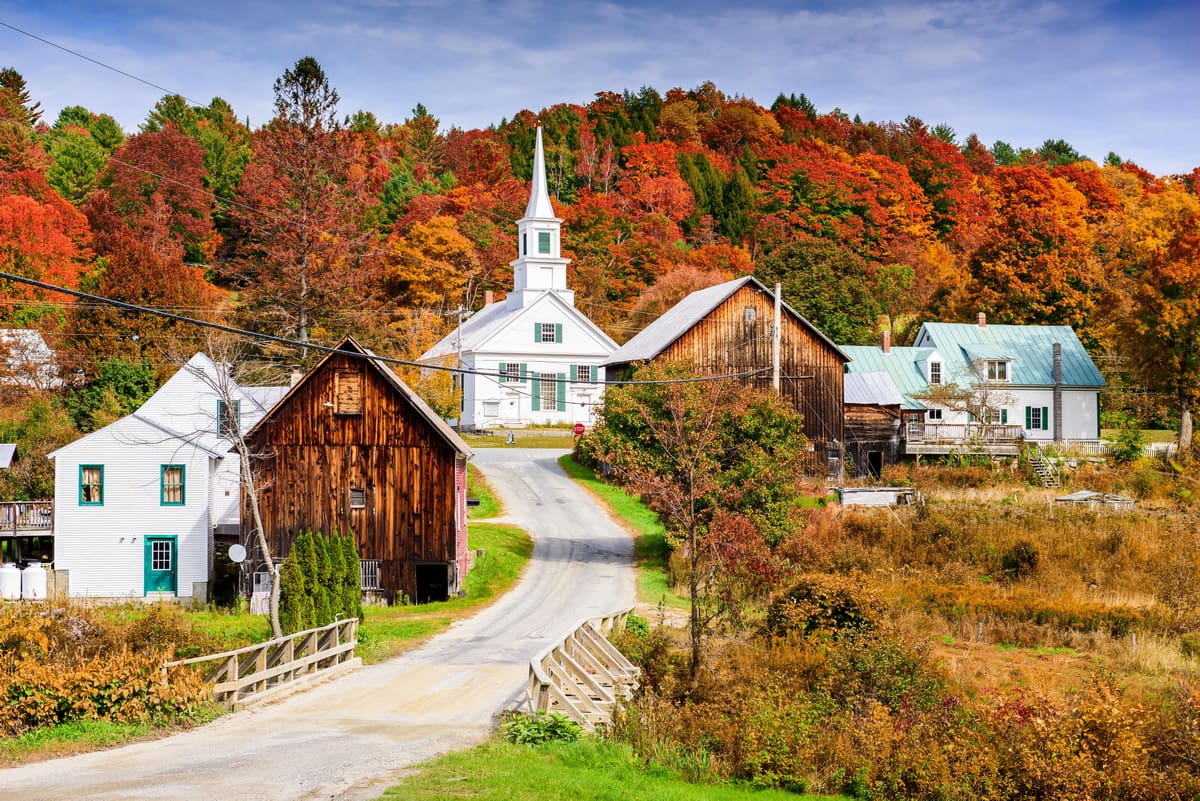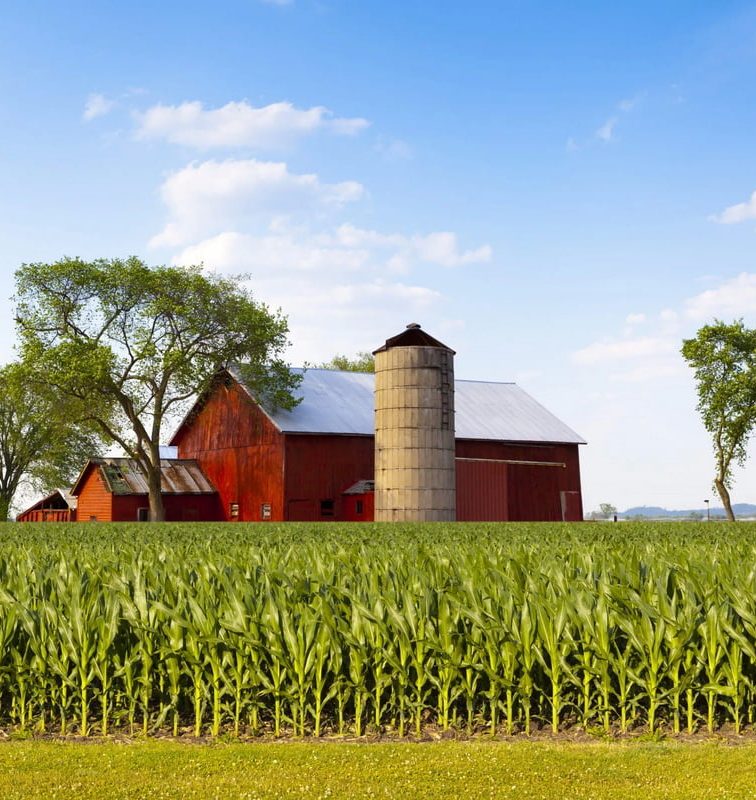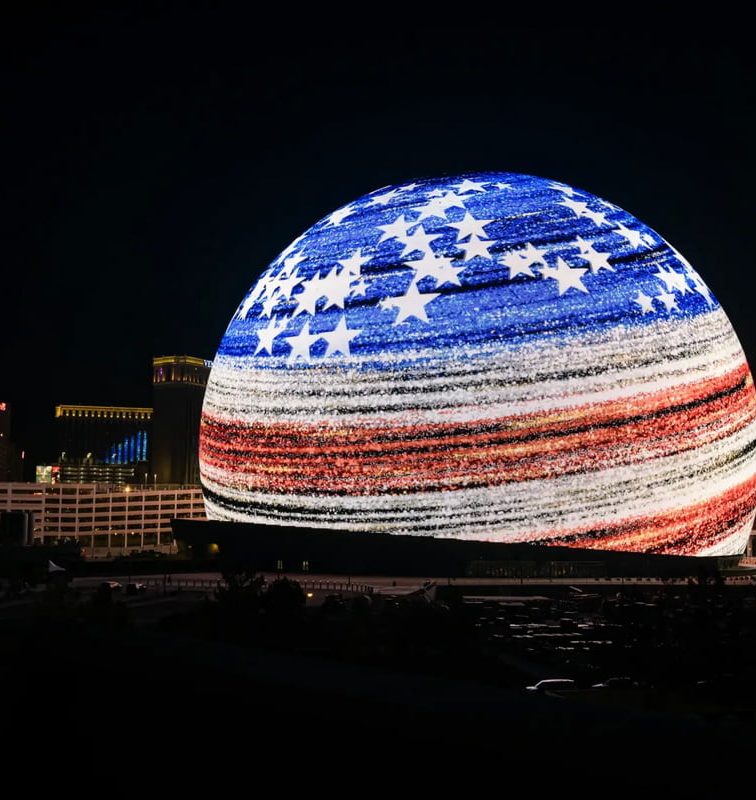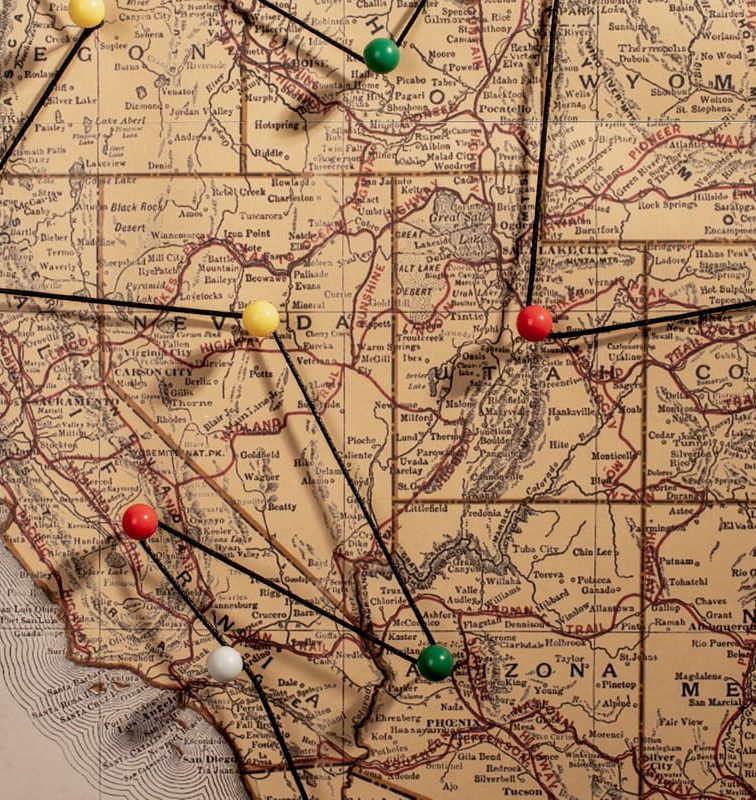Imagine a place where billboards are banned to preserve natural beauty, where the world’s largest grilled cheese sandwich was created, and where ice cream flavors are as quirky as the state’s spirit. Welcome to Vermont, a land of unexpected delights and enchanting surprises.
From its days as an independent country to its status as the maple syrup capital of the U.S., Vermont is a treasure trove of peculiar and captivating stories. It’s a state where history, culture, and nature intertwine in the most fascinating ways. As we dive into these fun facts about Vermont, prepare to be charmed by the Green Mountain State’s unique blend of whimsy and wonder.
1. Rural Dominance in Vermont
Vermont’s rural character is deeply ingrained, with 64.8% of its population living in non-metropolitan areas. This rural majority shapes the state’s culture and economy. A Vermont Rural Life Survey highlighted key aspects: While rural residents generally report a good quality of life, they face affordability challenges. Many struggle with housing costs and unexpected expenses.
Concerns about future opportunities for youth also prevail, with nearly half advising younger generations to seek success elsewhere. Despite these challenges, strong community bonds and a high level of civic engagement reflect Vermont’s enduring rural spirit.
2. “Green Mountains” Origins
The name “Vermont” intriguingly hails from the French phrase “verts monts,” meaning “green mountains.” This nomenclature was likely coined by Thomas Young, a self-taught scholar, in the late 18th century. At the time, “mont” in French, although archaic, was used in geographical names, carrying a sense of antiquity.
The choice of Vermont over more straightforward French constructions like “Montagues Vertes” reflects a historical penchant for using French in place naming, adding a touch of the old-world elegance to the American landscape.

Image: collectmorestories.com
3. Small State, Big Impact
Despite its small size, Vermont makes a significant mark. As the second-least populated state in the U.S., Vermont’s population stands around 647,818. Its modest size belies its cultural and natural richness. With no major urban centers, Vermont’s charm lies in its rural landscapes and small communities.
Burlington, its largest city, has just over 42,000 residents, exemplifying the state’s preference for close-knit, smaller communities. This small state, known for its environmental consciousness and vibrant community life, demonstrates that impact is not always about size.
4. Tiny Capital
Montpelier, Vermont, holds the unique distinction of being the least populated U.S. state capital. With a 2024 population of just 7,981, it’s a city that embodies the charm of small-town America.
Despite its modest size, Montpelier serves as a hub during the day, with its population swelling to around 21,000 due to commuters. This tiny capital reflects Vermont’s overall preference for close-knit communities and rural living, standing in contrast to the bustling metropolises that typically serve as state capitals.
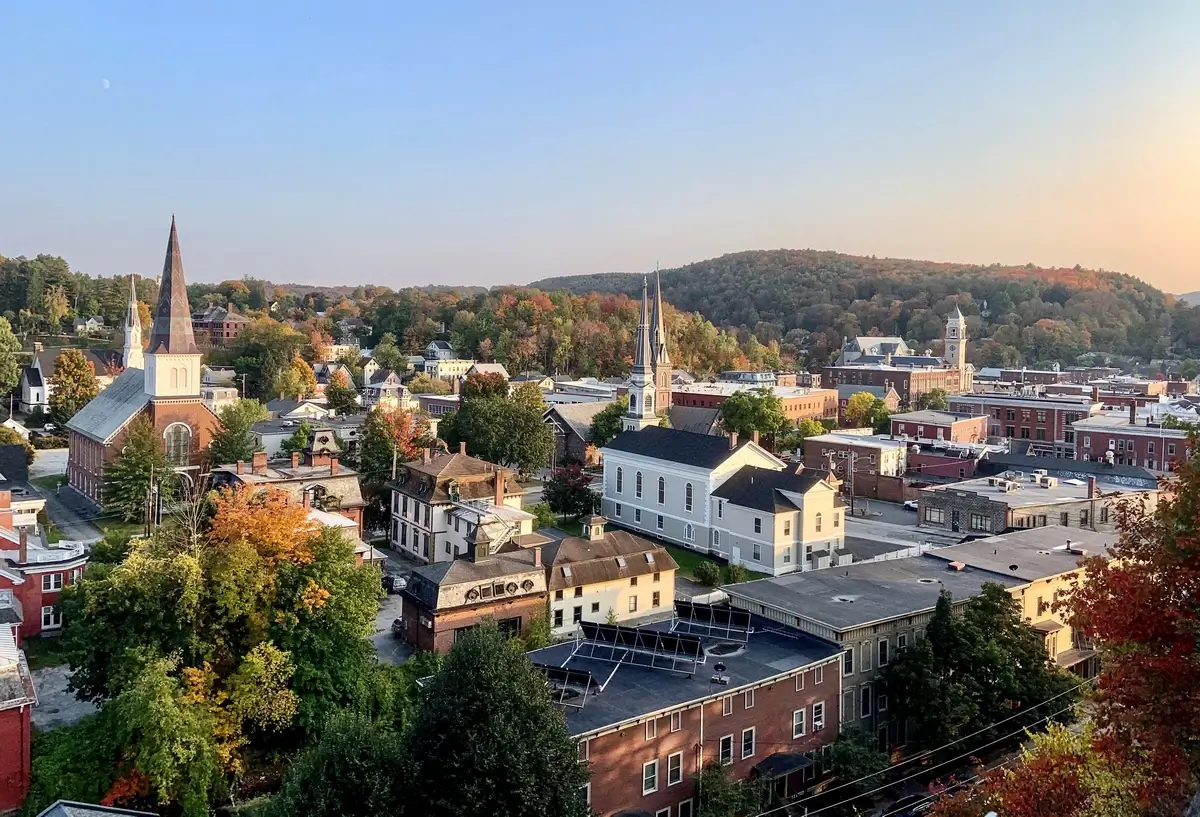
A scenic view of Montpelier. Image: honeyfund.com
5. Billboard Ban
In 1968, Vermont enacted a groundbreaking law banning billboards to preserve its natural beauty. This initiative, led by Republican Ted Riehle, marked Vermont as a pioneer in environmental conservation and a champion of scenic beauty. The ban aimed to rid the state of roadside billboards, considered a blight on the landscape.
Despite opposition, Vermont’s commitment to its picturesque environment prevailed, making it the first state in the continental U.S. to implement such a ban. Today, Vermont’s lack of billboards is a testament to its dedication to preserving the state’s natural charm.
6. No Skyscrapers
Vermont’s landscape remains uncluttered by skyscrapers, preserving its scenic vistas. The state’s tallest building, Decker Towers in Burlington, is only 124 feet tall with 11 floors. Completed in 1971, this residential building stands as a modest architectural presence in a state renowned for its natural beauty and commitment to environmental preservation.
Vermont’s lack of high-rise buildings reflects its unique charm and dedication to maintaining a serene, natural environment.

Decker Towers in Burlington. Image: Reddit
7. Vermont’s Progressive Constitution
Vermont’s 1777 Constitution was truly groundbreaking. It was the first constitution within what is now the United States to grant voting rights to all male residents over twenty-one, regardless of property ownership or tax contributions.
This significant move paved the way for a more inclusive form of democracy, where a person’s socioeconomic status did not determine their right to vote. Vermont’s early constitutional framework reflected its unique and progressive approach to governance and civil rights.
8. Unique Vermont Geography
Vermont is distinct within the New England region as the only landlocked state, setting it apart from its coastal neighbors. This geographic characteristic contributes to Vermont’s unique identity in the region.
Surrounded by New York, Massachusetts, New Hampshire, and Canada, Vermont’s landscape is defined by the Green Mountains and lacks direct access to the Atlantic Ocean. This landlocked nature has shaped both its cultural and natural environment.
9. Vermont’s Rich Marble Quarry Heritage
Vermont is home to the United States’ first marble quarry, opened in Dorset in 1785, and also boasts the world’s largest underground marble quarry, located in Danby. This Danby Quarry, operational since 1903, extends 1.5 miles underground and has supplied marble for iconic structures like the Jefferson Memorial and the U.S. Supreme Court building.
Vermont’s marble industry has significantly shaped its history and landscape, attracting a diverse workforce and leaving a lasting cultural impact on the region.
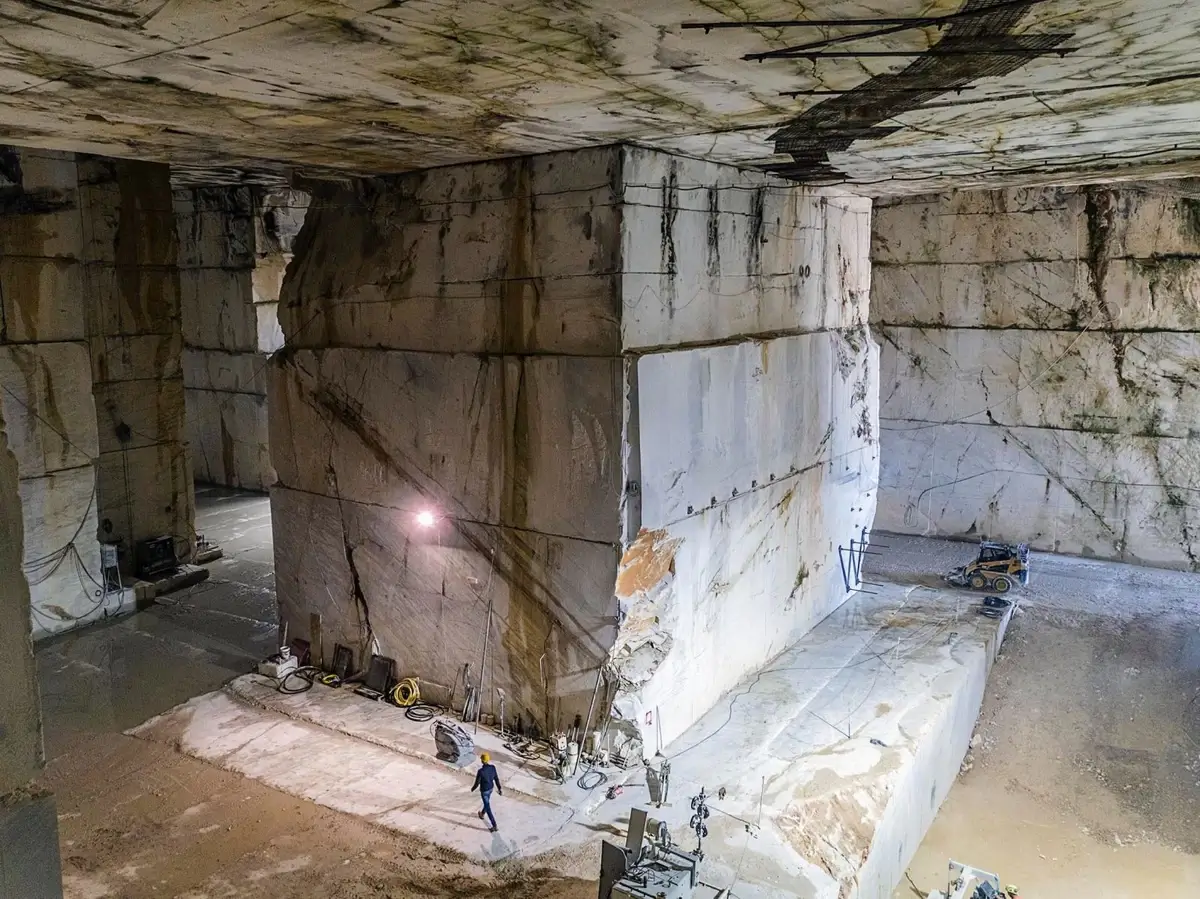
Image: worldkings.org
10. Maple Syrup Dominance
Vermont reigns as the top producer of maple syrup in the U.S. In 2022, the state set a record by producing 2.55 million gallons of maple syrup, more than double the total U.S. production. With 6.65 million taps, Vermont’s production has seen significant growth since 2003 when it had 2.12 million taps. The state’s rich maple syrup tradition is reflected in both its quantity and quality, solidifying its status as a leader in the industry.
11. Covered Bridge Capital
Vermont is renowned for having the highest number of covered bridges per square mile in the United States. The state boasts over 100 authentic covered bridges, recognized not by their age but by their distinctive construction.
These architectural gems, often featuring truss-supported structures, contribute to Vermont’s picturesque landscape and historical charm.
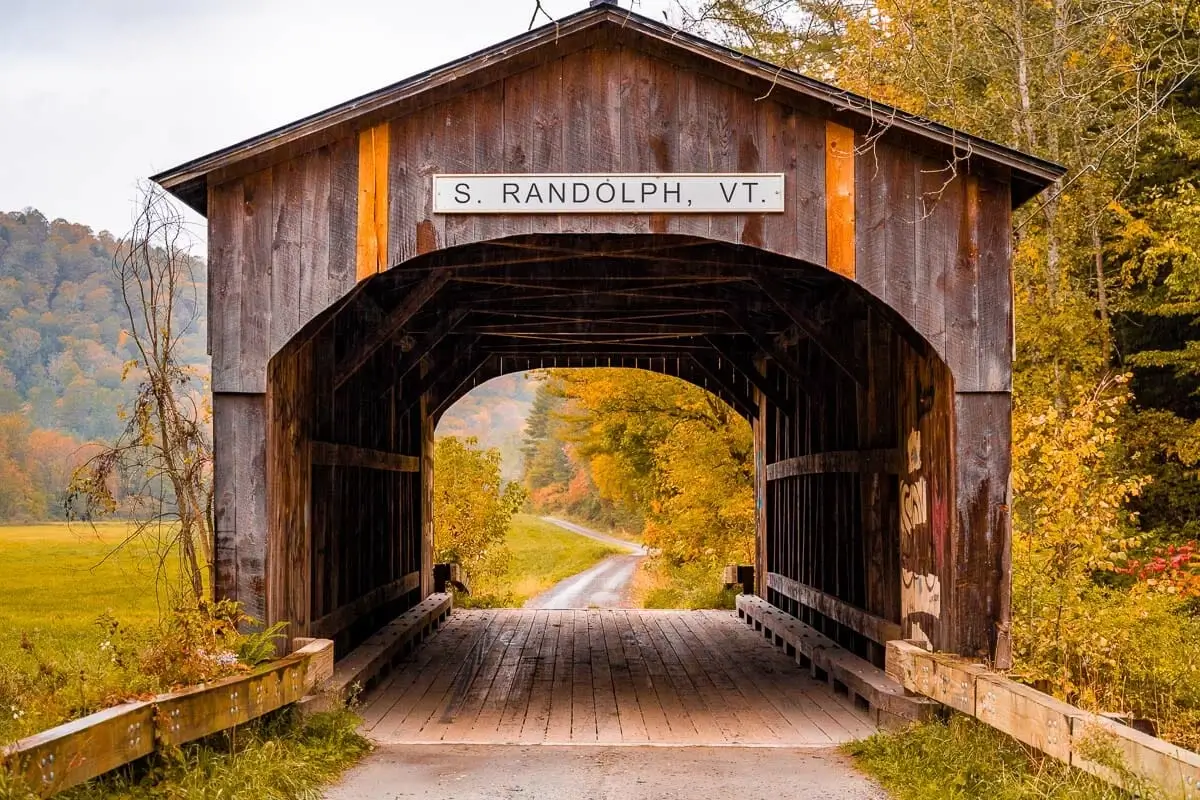
Image: shewandersabroad.com
12. Forest-Covered State
Vermont’s landscape is heavily forested, with approximately 78% of its land area covered by forests. This equates to around 4.5 million acres, a level of forest cover that has remained consistent since the 1980s. The state’s forests are a mix of northern hardwoods, predominantly beech, birch, and maple, with sugar maple alone accounting for about 20% of the forest composition.
The significance of these forests extends beyond their ecological value; they are crucial to Vermont’s economy. The forestry, logging, and wood products industries contribute substantially to the state’s economy, generating over $830 million and providing thousands of jobs.
Interestingly, most of Vermont’s forests are privately owned, with individuals and families owning more than 80% of the forest land. This private ownership is unique compared to other northeastern states, where corporate ownership is more common.
13. Long Inhabited Land
Vermont’s rich history stretches back approximately 13,000 years with the arrival of the Paleo-Indians. This state, now known for its lush landscapes, was once the home of the Abenaki and Mohican tribes, along with others like the Massachusett, Pennacook, and Pocomtuc.
Contrary to earlier beliefs that these lands were solely hunting and fishing grounds, evidence of permanent settlements has been discovered. These findings include sites along the Connecticut River and at the mouth of the Missisquoi River.
Additionally, Vermont’s Native American heritage is reflected in its place names. “Jamaica,” derived from the Natick language meaning “beaver,” and “Winooski,” from the Abenaki for “wild onion place,” are testaments to this legacy.
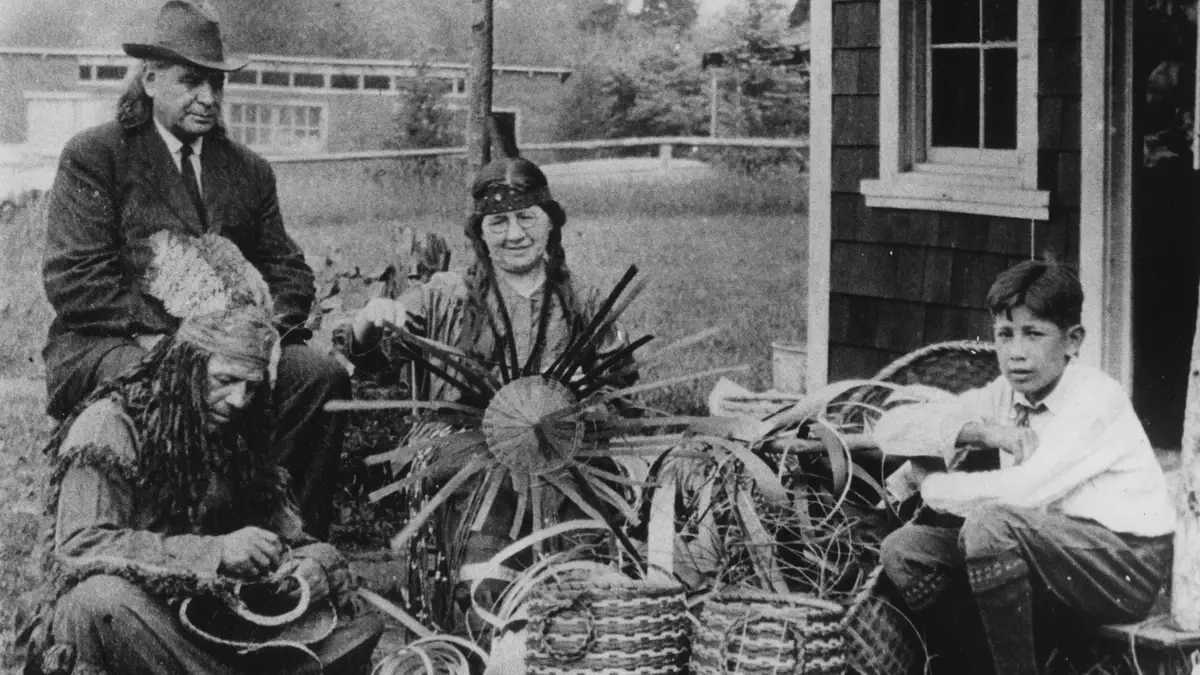
Image: burlingtonfreepress.com
14. Lake Champlain’s Monster: “Champ”
Lake Champlain, straddling Vermont and New York, is famous for its own legendary lake monster, “Champ.” For centuries, stories of this mysterious creature have intrigued locals and visitors alike. The Abenaki and Iroquois tribes, indigenous to the region, have legends about a large creature in the lake, which they named Gitaskog. The earliest European account, often mistakenly attributed to Samuel de Champlain, described a large fish with formidable scales and teeth.
Champ’s fame grew with numerous sightings. A notable one in 1819 involved Captain Crum witnessing a 187-foot-long creature with distinctive features. Another surge of sightings occurred in 1873, including one that nearly overturned the steamship W.B. Eddy. The fascination with Champ extended to P.T. Barnum, who once offered a reward for proof of the creature.
Recent sightings and efforts to capture Champ’s image or sounds have fueled ongoing interest and speculation. Some suggest that Champ could be a large sturgeon or garfish, while others maintain the mystery of a unique creature. Champ holds a special place in local culture and is protected by law in both Vermont and New York.

A disputed photograph attributed to Sandra Mansi, allegedly captured in Lake Champlain in July 1977, is regarded as the most well-known image of Champ. However, it has faced significant criticism and debunking by Robert Bartholomew in his book. Image: timesunion.com
15. Vermont’s Dairy Dominance
Contrary to popular belief, Vermont does not have more cows than people. However, the state’s dairy industry is still a significant part of its identity and economy. Vermont is known for its large dairy farms, and while it may not lead in the number of cows, it plays a crucial role in dairy production.
The state’s dairy farms produce a substantial amount of milk, contributing to Vermont’s economy and the national dairy market. Vermont’s dairy industry includes over 140 firms processing milk into various products like cheese, butter, and yogurt, with some famous producers like Vermont Creamery and Cabot Creamery.
Despite a decline in the number of dairy farms over the years, the dairy industry remains a vital part of Vermont’s agricultural landscape.
16. Vermont’s Independent Nation Period
From 1777 to 1791, Vermont existed independently, initially called New Connecticut and later renamed. The Vermont Republic, established amidst land disputes, was progressive for its era. Its constitution, drafted in 1777, was one of the first to grant universal male suffrage and abolish adult slavery.
Vermont issued its own currency, the Vermont copper, and established a postal service. Despite its initial neutral stance during the American Revolution, Vermont eventually joined the Union as the 14th state in 1791, after resolving land conflicts and compensating New York.
17. First U.S. Postage Stamp
The town of Brattleboro, Vermont, holds a unique place in American postal history. In 1846, it produced what is considered one of the earliest American postage stamps, the “Brattleboro Stamp.” This stamp was designed by Thomas Chubbuck at the request of Frederick N. Palmer, the then postmaster of Brattleboro.
Only 500 of these stamps were printed and used until 1847, when they were ordered to be destroyed by the United States Post Office Department. The Brattleboro Stamp is a philatelic rarity, valued highly among collectors due to its scarcity and historical significance.
18. Snow Golf Birthplace
Rudyard Kipling, the famous author of “The Jungle Book,” invented Snow Golf at his home in Dummerston, Vermont. This unique twist on traditional golf was created after he was introduced to the game by Sir Arthur Conan Doyle.
Snow Golf, a fun wintertime variation, was first played at Kipling’s Naulakha estate in Vermont, according to the U.S. Golf Association and historical accounts. This fun adaptation of golf demonstrates Kipling’s creativity and has become a part of Vermont’s unique cultural heritage.
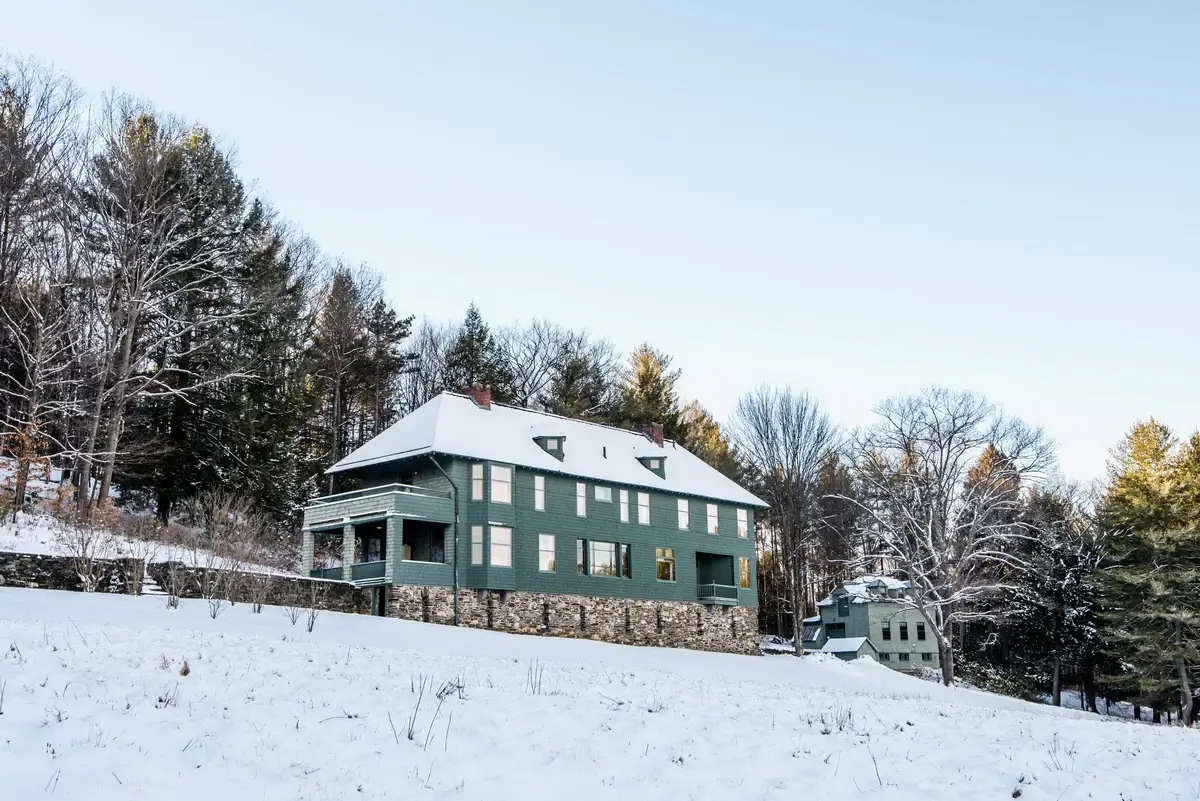
Naulakha, Kipling’s home in Dummerston, Vermont, during winter. Image: houzz.co.uk
19. Snowflake Photography
Wilson Bentley, affectionately known as “Snowflake” Bentley, was a Vermont farmer who revolutionized the way we see snowflakes. He is celebrated for his pioneering work in snowflake photography.
Bentley’s fascination with snowflakes led him to develop a technique for capturing detailed images of these delicate ice crystals. His discovery that no two snowflakes are alike transformed our understanding of snowflakes and contributed significantly to the field of photography and meteorology.
20. Warrant for Presidential Arrests
In 2008, two Vermont towns, Brattleboro and Marlboro, passed unique resolutions instructing police to arrest President George W. Bush and Vice President Dick Cheney for “crimes against our Constitution.” These resolutions were symbolic gestures reflecting the towns’ opposition to the Bush administration’s policies.
Vermont, known for its liberal stance on political issues, has also passed non-binding resolutions to end the Iraq War and impeach Bush and Cheney. However, these measures were symbolic and did not result in any legal action.
21. Ben & Jerry’s Home
Ben & Jerry’s, the iconic ice cream brand, was founded in Burlington, Vermont, in 1978 by Ben Cohen and Jerry Greenfield. They started in a renovated gas station, and their brand quickly became known for its unique and indulgent flavors.
Today, Ben & Jerry’s operates globally but maintains its roots in Vermont, where its original flavors were conceived and its activism for social justice began.
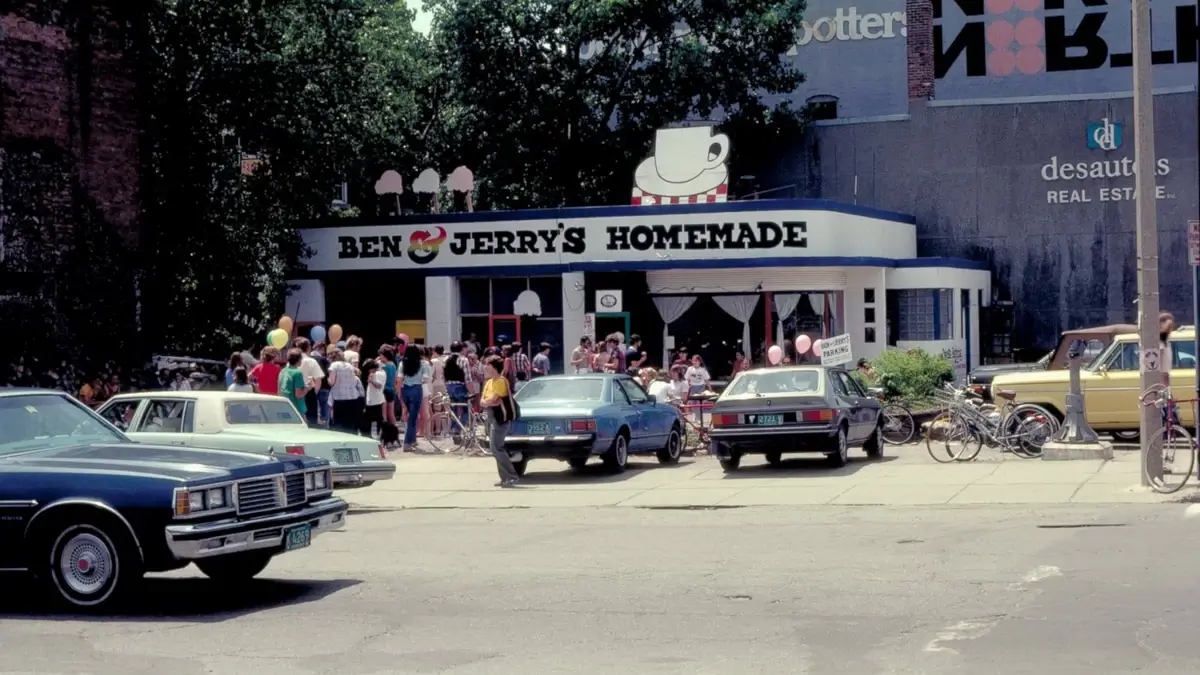
The first Ben and Jerry’s store in 1978 was situated in a refurbished, deserted gas station. Image: abcnews.go.com
22. Last to Have a Walmart
Vermont became the last state in the U.S. to welcome a Walmart store in 1995. The first store was opened in Bennington, but only after a five-year struggle with local environmentalists. This led to a significant compromise: the store, instead of being a typical large-scale Walmart building, occupied a 50,000 square foot space in downtown Bennington, previously an F.W. Woolworth’s store.
This marked a significant adaptation of Walmart’s usual store model, highlighting Vermont’s commitment to environmental preservation and community aesthetics.
23. No McDonald’s in Montpelier
Montpelier, Vermont, is unique as it is the only U.S. state capital without a McDonald’s. With a population of only about 7,500, Montpelier is the smallest state capital in the U.S.
The city tends to favor local businesses over large chains, which explains the absence of a McDonald’s. However, for fast food enthusiasts, the neighboring city of Barre hosts a McDonald’s, just a short drive away.
24. Happiest State
In 2013, Vermont was recognized for its high levels of happiness, ranking as the fifth happiest state in the U.S. This ranking was based on a survey that evaluated various aspects of societal wellbeing, not just traditional economic indicators.
Vermonters’ happiness was measured across multiple domains including life satisfaction, physical health, community vitality, and material wellbeing. This comprehensive approach to assessing happiness highlights Vermont’s unique quality of life and the contentment of its residents.
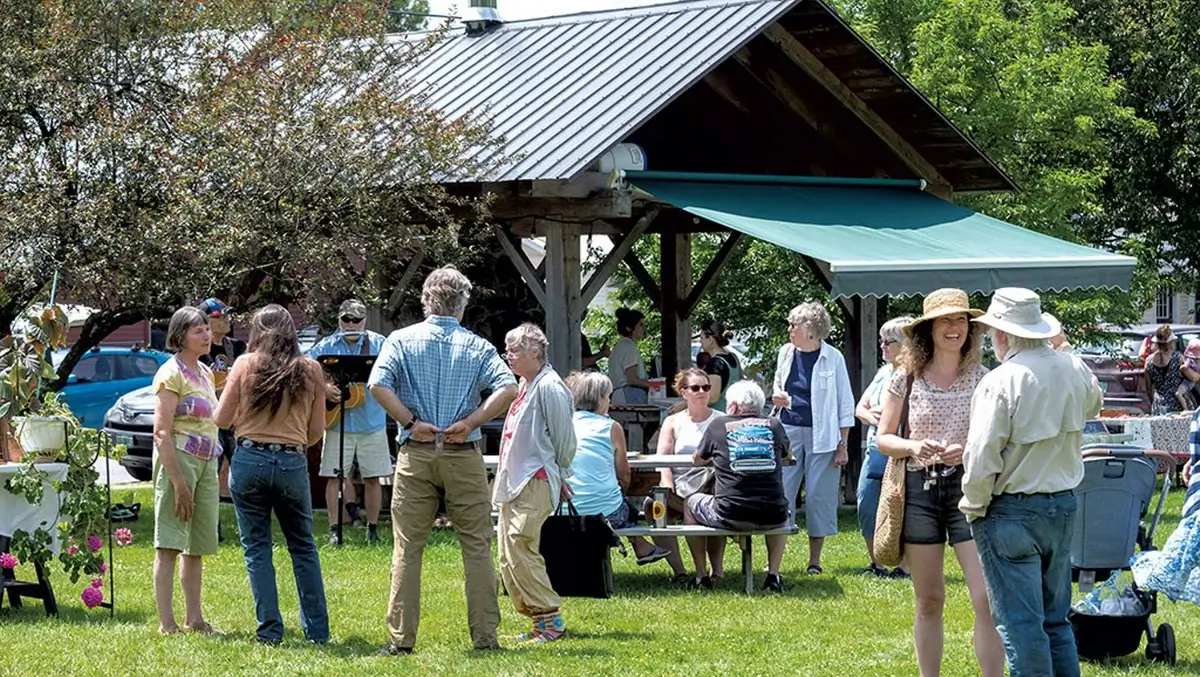
Image: sevendaysvt.com
25. From Sea to Lake
Lake Champlain, now a freshwater lake, has a fascinating geological history. It was once part of the Champlain Sea, a prehistoric inlet of the Atlantic Ocean. This transformation occurred about 13,000 years ago due to the retreating ice sheets at the end of the last glacial period.
As the land rose through isostatic rebound, the sea gradually receded, leaving behind Lake Champlain. This change from a sea to a lake reflects the dynamic nature of Earth’s geological history.
FAQ
What makes Vermont unique?
Vermont stands out for its environmental consciousness, being the first state to ban billboards and not having any skyscrapers. Its landscape is heavily forested, with over 75% coverage, making it one of the most forested states. Vermont’s rural nature, with a high proportion of residents living in rural areas, contributes to its distinct culture.
What is Vermont’s state nickname?
The state’s nickname, “The Green Mountain State,” directly relates to its French-derived name “verts monts,” reflecting its prominent green mountains.
Is Vermont known for any food?
Vermont is renowned for its maple syrup, contributing significantly to the U.S.’s production. It’s also known for high-quality dairy products, including artisanal cheeses.
What did Vermont invent?
Vermont is credited with the invention of snow golf by Rudyard Kipling. It also played a significant role in the history of skiing in the U.S., with the first rope tow created by Robert Royce in 1934.
Who founded Vermont?
While Vermont wasn’t founded by a single individual, figures like Ethan Allen and the Green Mountain Boys were pivotal in its early history, especially in defending the land against New York and New Hampshire claims during the American Revolutionary period.


